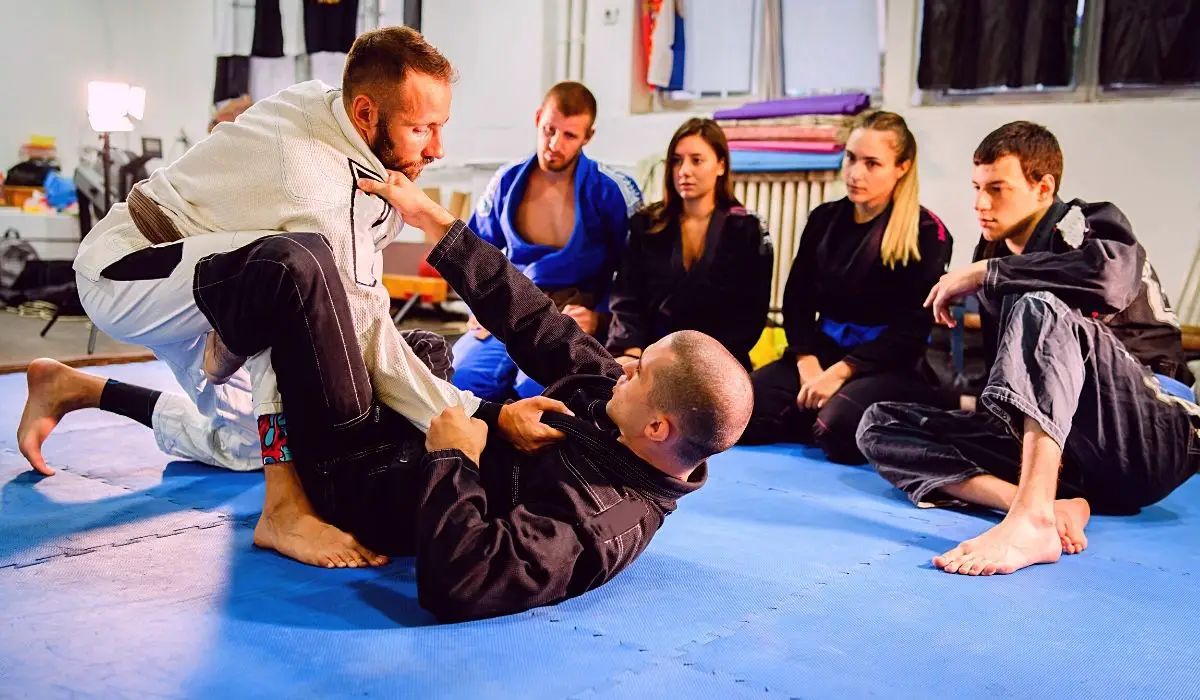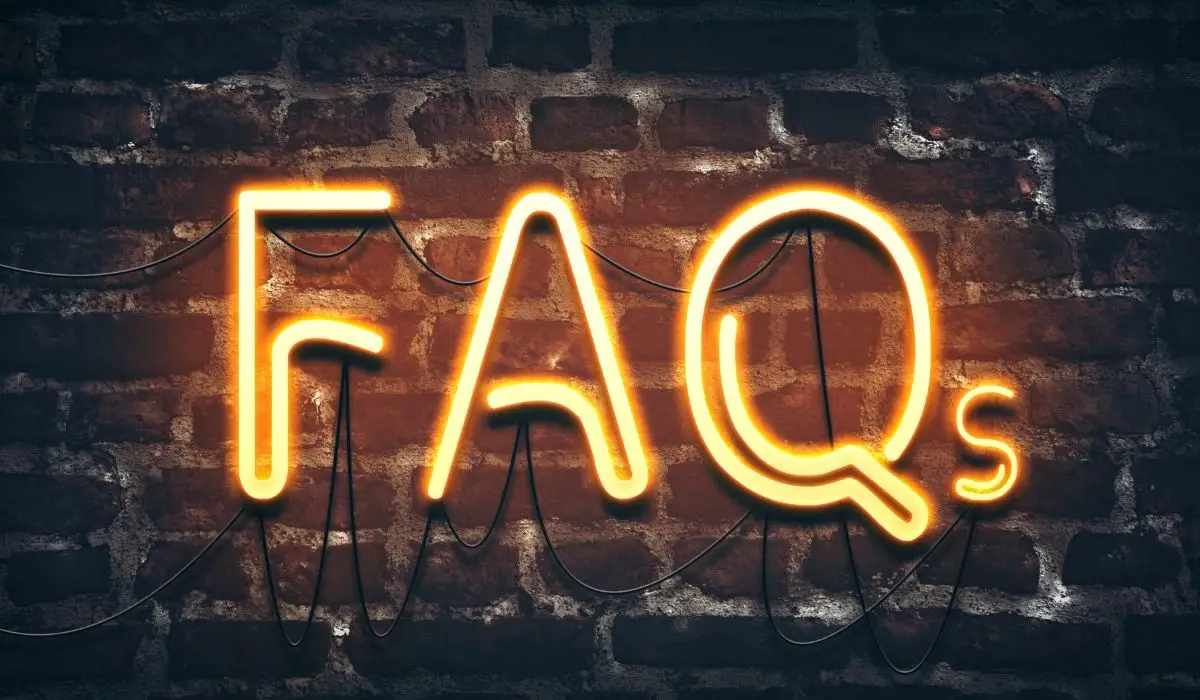As a beginner or expert practitioner, you will need many guard passing techniques because the guard is one of the most played positions you should handle. The good news is several guards pass in Brazilian jiu-jitsu.
Toreando, knee cut, double under, single under, and over under are just a handful of the guard passing techniques that can help you improve your game significantly.
The guard position is critical in a challenging grappling game where the bottom player establishes excellent control over his opponent to limit him. In that case, the top player should pass the bottom opponent’s guard to get out of the danger zone. Continue reading to learn more!
What Are the Best Guard Passes in Brazilian Jiu-Jitsu?

The guard position is essential in BJJ combat, and guard passing is a crucial skill every practitioner should learn. These are some of the top Brazilian Jiu-Jitsu guard passes.
Knee Cut Pass
The knee cut pass (knee slide or slice) is a fantastic guard passing technique used in jiu-jitsu Gi and No-Gi. Both beginners and expert practitioners enjoy performing this guard pass since it’s simple and effective from the open and half guards.
The player should create space and manage distance within his opponent to perform the knee slide pass. Then, he should slide his knee over the opponent’s legs while controlling his hips and shoulders.
In the following video, Lucas Lepri teaches you how to execute the knee-cutting pass from an open guard. Surely, Learning the knee slice pass will help you improve your guard passing strategy to pass an opponent’s guard.
Over Under Pass
The over-under pass is one of the best BJJ guards passes available. It’s a fantastic guard passing technique used mainly in Gi and No-Gi. However, this kind of guard passing can be more suitable for heavy players since it requires tremendous pressure to do it properly.
Furthermore, the over-under guard pass technique can be entered from an open, half-guard, etc. And it demands that you insert your arm over your opponent’s legs and your other arm under his legs. Then, move to one side to finish the guard pass move.
In the following video, Thomas Lisboa teaches you to do an effective under-guard pass against larger opponents. Indeed, mastering the over-under pass will aid you in improving your guard passing method, allowing you to pass an opponent’s guard successfully.
Stack Pass
The stack pass is another excellent Brazilian jiu-jitsu guard pass available out there. It’s a pressure passing technique primarily used by many fighters in Gi and No-Gi due to its effectiveness.
Otherwise, there are many variations of the stack pass in jiu-jitsu, including the double leg stack pass, single underhook stack pass, etc.
Furthermore, the stack guard pass technique can be entered from many positions, including closed, open, and half. And it demands that you take the opponent’s hips off the mat while using your shoulders to create massing pressure.
In the following video, Fabio Gurgel teaches you how to set up an effective stack pass technique from the closed guard. Indeed, mastering the stack pass will assist you in developing your guard passing style so far.
Toreando Pass
The toreando pass (or Toreada pass) is one of the most effective guard passing techniques in BJJ Gi and No-Gi. It is a crucial guard pass that both beginners and expert practitioners employ because of its efficacy.
Otherwise, toreando refers to “bullfighter” because it resembles the well-known Spanish bullfighting sport.
Andre Galvao shows you the basics of the toreando pass in the video below. As a result, you may utilize this guard passing technique to go beyond any Brazilian jiu-jitsu opponent’s guard.
Long Step Pass
The long-step move is considered one of the best BJJ guard passes available. It’s a fantastic guard pass technique that has modified how people think about the jiu-jitsu game. Moreover, this guard pass technique can be applied in Gi and No-Gi Brazilian jiu-jitsu.
In the following video, Keenan Cornelius demonstrates how to execute an open guard’s long-step pass method. Indeed, knowing how the long-step pass method works can aid you in refining your guard passing style.
Folding Pass
The folding pass is another excellent Brazilian jiu-jitsu guard pass technique for BJJ practitioners. Another pressure passing technique can be performed from an open guard, Z guard, etc.
Furthermore, the folding pass technique requires that the player trap both opponents’ legs while applying unsupportable pressure. Therefore, the folding guard passing technique is simple and more powerful to dominate opponents.
Marcus “Buchecha” Almeida teaches you several folding guard passing variations in the following video. Learn and improve your guard passing techniques.
Leg Drag Pass
The leg drag pass is one of the best BJJ guard passes available for advanced competitors. It’s another fantastic passing technique frequently entered from the quarter position, De La Riva guard, among other positions.
Andre Galvao teaches you the leg drag pass concepts with fantastic variations like leg drag to the back position in the following video. Learn and Upgrade your BJJ game.
Related: Whether a novice or a seasoned practitioner, learning several types of guards is essential for pushing your BJJ game to the next level. I wrote an article offering a comprehensive list of jiu-jitsu guards that any practitioner should know. Click here to read more!
Is It Simple to Pass the Guard in BJJ?

Passing guard in Brazilian Jiu-Jitsu is a complex undertaking. It requires a high degree of skill and technique and the ability to spot and exploit flaws in your opponent’s defense.
Passing guard involves more than technical understanding; it necessitates a strategic approach and the ability to break your opponent’s defense.
Although, achieving a guard pass in BJJ is one of the most challenging things you’ll ever have to accomplish. It requires a lot of practice, excellent technical knowledge, and a deep understanding of the game.
How to Pass Guard BJJ?
Passing guard in Brazilian Jiu-Jitsu might be challenging, but it is possible with appropriate technique and strategy. The following are some helpful tips to pass an opponent guard:
- Establish grips: Before trying to pass guard, ensure you fully grasp your opponent’s gi. This will allow you to control their movements and prevent them from launching assaults.
- Detect flaws: Search for weaknesses in your opponent’s defense. This might be due to a knee gap or a lack of hip mobility. After identifying their flaws, you may exploit them and get beyond their defenses.
- Pressure and Posture: Maintain pressure on your opponent while maintaining proper posture while trying to pass guard. This will prevent them from scooping or submitting you from the ground.
- Have a Wide range of guard passing techniques: Employ various methods rather than relying on a single guard pass. Instead, combine tactics like leg drags, knee slices, and torreandos to keep your opponent guessing and prevent them from countering your passes.
- Be patient: Passing guard in BJJ requires time and patience. Maintain control of your opponent throughout the process by not rushing your passes.
In the following video, John Danaher teaches you all you need to pass any jiu-jitsu guard.
Open Guard Passing System
The open guard is one the most brutal and hybrid guards in Brazilian jiu-jitsu. This is because the bottom player can use a wide range of guards simultaneously, including the spider guard, DLR Guard, X guard, etc.
Jon Thomas, a BJJ black belt, displays a fantastic open-guard passing strategy that can be used to break any guard in the video below. It features a variety of guard passes such as Toreando, knee cut, stack pass, and others, as well as a detailed explanation of when and how to employ them appropriately.
Final Thoughts
Several jiu-jitsu fighters have tested the effectiveness of the above-listed guard passing tactics in various competitions. As a result, you should master some of these guard passes to improve your game and become a brutal competitor.
We hope this Brazilian jiu-jitsu article will help you become a great guard passer fighter. So, get to work and use these techniques to pass any guard position, including the half guard, closed guard, De La Riva guard, etc.
Speak your mind; What is your favorite guard passing technique?
Related: Whether a beginner or a seasoned practitioner, knowing how to attack and defend from various jiu-jitsu positions is essential for taking your BJJ game to the next level. I wrote an article that comprehensively lists the fundamental BJJ positions you should know. Click here to learn more!
Frequently Asked Questions

What Does Passing Guard Mean In Brazilian Jiu-Jitsu?
The guard passing refers to the process a top player uses to break and pass the bottom player’s legs and hands frames in jiu-jitsu.
Then, he will land at the side control position and hold the new posture for enough time with sufficient control.
What Are the Necessary Guard Passing Concepts That Should I Know?
Guard passing is a fundamental skill in Jiu-Jitsu and other martial arts. It demands a proper technique to go beyond the bottom player’s legs to the side control position.
Furthermore, passing the guard is one of the most challenging aspects of Brazilian jiu-jitsu, especially for beginners. But, after years of training BJJ, it will be much easier and more enjoyable to pass someone guard since you will apply the following concepts for examples:
- Maintain a low center of gravity: The distance between your center of gravity and the mat makes the difference when trying to pass the opponent’s guard. For example, if your center of gravity is high, you’ll get swept easily.
- Choose one opponent’s side to attack: Choosing one side to attack will help put more pressure on your opponent to make mistakes. Otherwise, keep up the high-intensity rhythm till you pass the guard.



